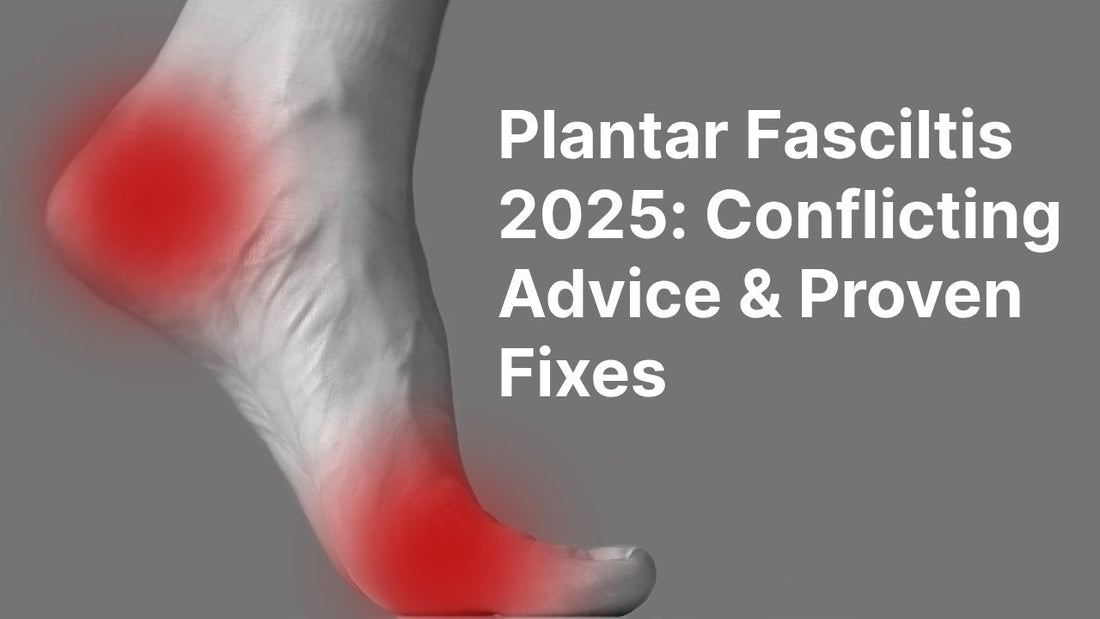
Plantar Fasciitis 2025: Conflicting Advice & Proven Fixes
Dr. Rob Letizia PT, DPTShare
By Dr. Rob Letizia • Spectrum Therapeutics • Updated May 2025
You wake up, take that first step, and—ouch! If the bottom of your heel screams every morning, you may have plantar fasciitis (PF for short). The internet is packed with advice, but half of it seems to say the opposite of the other half. This guide lays out what actually works—step by step—in clear, everyday language.
Quick Facts
- About 1 in 10 adults will feel PF heel pain at some point.
- Most people try home fixes for nearly 10 months before seeing a pro.
- Good news: with the right plan, pain often drops in 4–8 weeks.
Why Online Tips Seem to Clash
- Different causes: Tight calves, worn-out shoes, or walking style can each spark PF. A one-size-fits-all tip rarely works for everyone.
- Science moves slowly: New tools (like shockwave therapy) reach clinics before long studies hit journals, so blogs often lag behind.
- Viral “hacks” stick: One runner’s frozen-bottle trick goes viral and suddenly feels like a rule—whether or not it helps your foot.
What People Are Googling—and What It Means for You
1. Shoes That Actually Help
Look for three things:
- A firm heel cup → keeps the foot from wobbling.
- A small heel-to-toe drop (8-12 mm) → takes pressure off the arch.
- A curved “rocker” sole → lets you roll forward instead of jamming the heel.
Real-world picks: HOKA Bondi 8 for max cushion, or Brooks Ghost 16 for a lighter feel with solid support.
2. Shockwave Therapy—Sound Waves, Not Surgery
This clinic treatment sends pulsed sound energy into the sore spot. Think of it as a deep restart button for healing. Most people notice less pain after 4–8 weekly visits. No shots, no downtime—walk in, walk out.
3. Should You Roll Your Foot?
Rolling a frozen bottle or massage ball can calm pain for a few hours. Great as a warm-up or quick flare-up fix. But rolling alone won’t solve PF for good. Pair it with calf and foot-muscle exercises for lasting relief.
Your 4-Step Plan to Happier Heels
-
Ease the load & get checked. Cut back hard impact (running, long walks on concrete). Book a 15-minute scan to see how thick or irritated the fascia is.
Google likes: plantar fasciitis treatment near me -
Stretch the tight spots. Twice a day, hold a calf wall stretch and a seated toe-pull stretch for 30 seconds each.
Google likes: plantar fasciitis stretches -
Strengthen gradually.
- Weeks 1–2: Towel curls—scrunch a towel under your toes.
- Weeks 3–4: Slow single-leg calf raises off a step.
- Week 5 and beyond: Small hop drills to build spring.
-
Add proven helpers. Shockwave therapy, custom orthotics, or a night splint can speed things up—especially in stubborn cases.
Google likes: shockwave therapy plantar fasciitis
Why Spectrum Therapeutics?
- On-site ultrasound shows fascia thickness in real time.
- Shockwave-certified therapists tailor energy levels to your comfort.
- Hands-on care + gait coaching attacks the root cause, not just the pain.
FAQ—Quick Answers
How long until it stops hurting?
With the stretch-strengthen-shockwave combo, many mild cases feel 80 % better in 4–8 weeks. Tough cases can take up to 12 weeks.
Do I have to stop running?
Not always. Switching to short, softer-surface runs and adding the strength plan often lets you keep some mileage while healing.
Is rolling my foot a waste of time?
It’s a good pain break, just not a cure. Use it as a warm-up, then move straight into your stretches and strength moves.
Ready for Real Relief?
Book a 15-minute plantar-fasciitis scan at our Wayne, NJ clinic and leave with a step-by-step plan tailored to you.
Stop guessing. Start walking pain-free.



